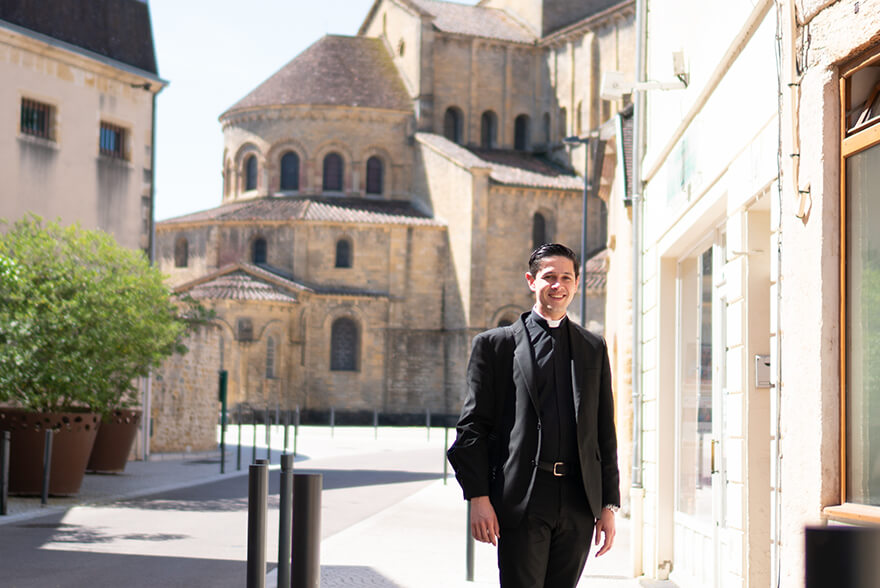“Laudato sia Gesù Cristo!” | Postcards from Rome 2019
Reflection on Week 3 (June 3-9):
These were some of the first words I heard upon our arrival in Italy last Saturday, as we made our way out of Fiumicino Airport and into the noonday Roman heat. A middle-aged Italian woman happened to be passing and, spotting our (admittedly conspicuous) group of thirty-some priests and seminarians in black cassocks and clerical collars, called out over the general din: “Praised be Jesus Christ!”
Indeed, may He be praised forever! What better words than these with which to begin our month-long stay in Roma Eterna, City of Popes and Emperors, martyrs and saints? We have reached the end of a whirlwind first week here (and it is hard to believe we have been here only that long!) After an easy flight of about an hour from Lyon, we touched down in the early afternoon, collected our bags, and took a bus to our hotel: a former convent which has been converted into a residence for pilgrims and visiting clergy. We are eventually going to stay at the Casa Internazionale de Animaziona Missionaria (CIAM) on the campus of the Pontifical Urban University, but they were not ready to receive us on Saturday, so instead we have spent the week in this beautiful hotel.
It has been a great place to stay, only a stone’s throw from the Vatican. We have only to walk out our front door, go through an underpass, and we come out the other side at the wall of the Vatican City State, opening onto St. Peter’s Square. I’ve also never stayed in a hotel with a chapel before – much less one where the Blessed Sacrament is reserved! We have had prayer and Mass every day just a short walk upstairs from our rooms.
Our first day here, after celebrating Mass and dropping off our laundry (a grave necessity after a week of washing our clothes in the sink in Ars!), we were set free to explore. A group of us went out for pizza, espresso, and gelato and then set about exploring churches, making a visit to Santa Maria in Traspontina (a beautiful Carmelite church on the Via della Conciliazione) and then to St. Peter’s Basilica – the mother church of Rome and glory of the Catholic world.
As we walked through the great basilica, I was approached by a Protestant woman from Malaysia and her two Italian Catholic friends. The woman asked me what I, being Catholic, felt when I entered the basilica. She explained very respectfully that she didn’t understand why we would have built such a grand church when people in the world, and indeed in her own county, are starving. I told her first that I felt that I was home, since the Holy Spirit is here and Our Lord in the Blessed Sacrament! Every Catholic can call this church, and every church in Christendom, their home and their heritage. St. Peter’s is as much for the poorest Roman peasant as the richest cardinal. Furthermore, the grandeur of a great basilica like St. Peter’s is not so much to impress visitors as to give glory to God, the One whose infinite glory “eye has not see, nor has ear heard,” but which can only be approached in human terms by the extremes of Benedictine simplicity or Baroque extravagance – to paraphrase Chesterton in his little book, The Resurrection of Rome.
On Sunday morning, I got up early and went back to pray at St. Peter’s as soon as it opened. It was wonderful to be there early in the morning, when the great space was quiet, filled only with the whispers of priests saying Mass at the side altars and the shuffling about of the few visitors, like myself, who had come early to adore in silence. Several of us seminarians then walked to the Solemn High Mass at the church of Santissima Trinità dei Pellegrini, on the other side of the Tiber, about half an hour from our hotel. I met up with a friend of mine, a Carmelite friar, who showed me some of the great churches of Trastevere and then the Teresianum, the Carmelites’ college in Rome and Pontifical Institute of Spirituality.
On Monday, we began our first week of classes at the Pontifical University of Santa Croce (Holy Cross). We have had class every morning and free afternoons to wander the city or go to churches as we like. This week’s course was on cultivating human virtues for spiritual fatherhood in priestly life and ministry by Fr. Robert Gahl, a professor of moral theology from the Diocese of Madison, WI. He was an excellent professor! We learned a lot about the history of ideas leading up to modernity, post-modernity, and now the new era of which we are on the threshold: Fr. Gahl calls it “trans-modernity.” We also learned a bit about positive psychology and the virtues, such as how to acquire good habits and redirect unwanted thoughts by recommitting to our ideals.
Throughout the whole week, Fr. Gahl kept talking about this Neapolitan dessert called babá as a metaphor for life infused with grace. (The dessert is like a doughnut soaked in rum – so saturated that it has to be eaten with a spoon – so every bite is bursting with rum, just like everything about our human nature after baptism is interpenetrated with supernatural life!) Well, we can’t stay in our hotel any longer after this Sunday night, but CIAM is not ready to receive us until Tuesday, so we are making an overnight trip to Naples on Monday … and I’m pretty sure there is just one thing on all of our minds to try while we’re there!
Next week we are beginning a new course on Christian Rome with an American professor named Dr. Michael Tinkler, a medievalist and art historian who specializes in the transition from the classical period to medieval Christendom. We had our first tour with him yesterday. We climbed to the cupola, the very top of the dome of St. Peter’s, and then walked through the basilica, taking a close look at the architecture and the various tombs and mosaics. We also went to Santa Maria in Trastevere, the oldest church in the city, and the Roman Synagogue, the oldest continuous community of Jews in the world.
This morning we had a visit to the Congregation for the Doctrine of the Faith, the Vatican office in charge of safeguarding and promoting the Catholic faith. You might know them by their older name: the Holy Roman Inquisition! Though methods change with the times, their mission remains the same: to ensure that the truth of the faith is preserved and handed on its in integrity wherever the name of Christ is preached. This afternoon, we have the “Scavi” tour of the necropolis beneath St. Peter’s, during which we will learn about the construction of the basilica and get to venerate the relics of the prince of the Apostles, buried directly beneath the high altar of the Basilica which bears his name.
Peter, then, is the rock on which the mother church of all Christendom is built – and more than anything in this first week in Rome, I have been struck by the fact that this city truly is the fons et origo, the source and origin, of the Church. Of course, we Catholics all know in an abstract way that Rome is our “capital city,” but in the United States, halfway around the world, it can seem very distant. It is one thing to know the role of the CDF and another thing to have visited their offices, to have looked down on St. Peter’s from their rooftop – or to have looked out on all the sprawling city of Rome from the cupola of the basilica, imagining the unbroken line of popes winding back through the centuries who have seen that broad vista, back to Peter himself, who looked out from the Vatican Hill for the last time over the city which had ordered his martyrdom. It is one thing to know that St. Peter is the rock on which Christ chose to build his Church, and quite another to stand in the city of Rome, in which the Church reigns Triumphant – for the Roman Empire, which ordered the execution of Peter, has long since passed into history, but the Roman Catholic Church, planted firmly on his witness and watered with his blood, stands strong here, and has spread its roots into every corner of the world.
Laudato sia Gesù Cristo! Praised be Jesus Christ, now and forever!
Matthew Knight
The Rome Experience Class of 2019
Archdiocese of Portland in Oregon
St. Patrick’s Seminary & University, Menlo Park, CA
Thou alone art holy, thou alone art the Lord, thou alone art Most High, O Jesus Christ.


